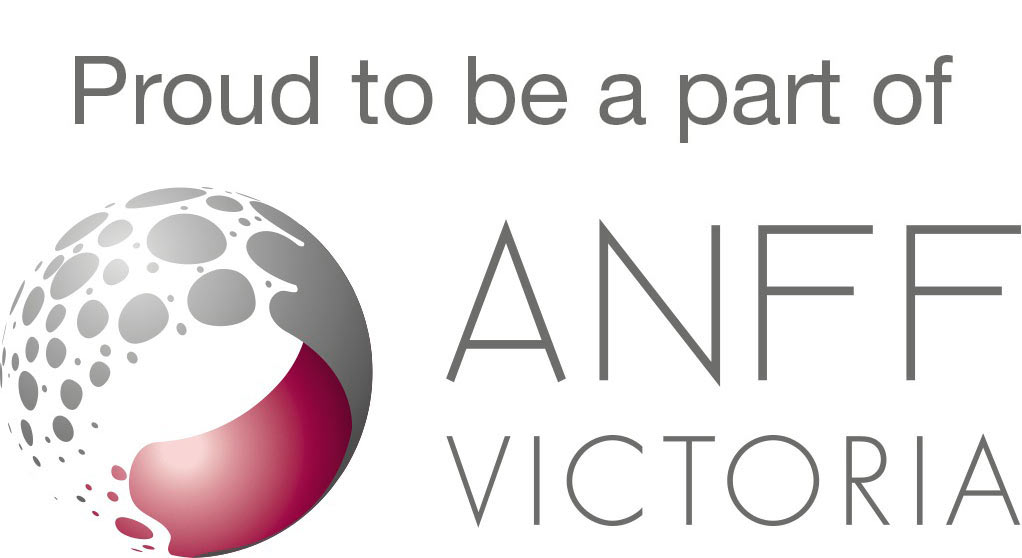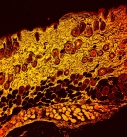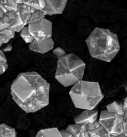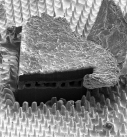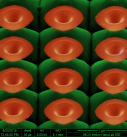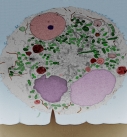Nanoscale Horizons Outstanding Paper runner-up 2018 enabled by MCN
A paper by MCN resident users has been selected as the Nanoscale Horizons Outstanding Paper 2018 runner-up.
The paper, A location- and sharpness-specific tactile electronic skin based on staircase-like nanowire patches (DOI: 10.1039/C8NH00125A) was written by Shu Gong, Yan Wang, Lim Wei Yap, Yunzhi Ling, Yunmeng Zhao, Dashen Dong, Qianqian Shi, Yiyi Liu, Hemayet Uddin and ANFF-VIC Technology Ambassador, Wenlong Cheng.
According to the RSC, “The article reports on a tactile electronic skin sensor based on staircase-like vertically aligned gold nanowires. With a back-to-back linear or spiral assembly of two staircase structures into a single sensor, the authors were able to recognize pressure in a highly location-specific manner for both non-stretched and stretched states opening up a new route to highly specific second-skin-like tactile sensors for wearable sensing applications.”
Nanoscale Horizons, a journal published by the UK’s Royal Society of Chemistry, put together a shortlist of articles published during 2018 based on the science presented and the article metrics including average article downloads and citations, and Altmetrics. The shortlist was reviewed by the journal’s Editorial and Advisory Board members.
Platform Manager Position Available At UniMelb
There is currently a Platform Manager position available at the University of Melbourne to lead the operations of the Materials Characterisation and Fabrication Platform (MCFP) at the Department of Chemical Engineering. This position is a maternity leave backfill for a period of 9 months.
The deadline for applicants is 1 May 2019, click here for more details.
ANFF-VIC Technology Ambassadors – Class of 2019
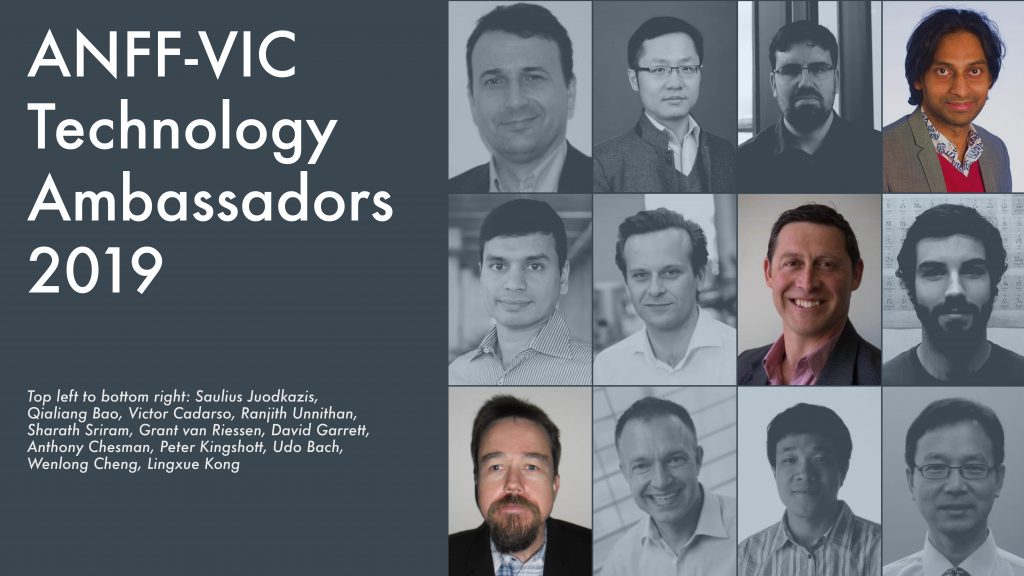
ANFF-VIC has welcomed three new Technology Ambassadors in March – Dr David Garrett, Dr Ranjith Unnithan and Professor Peter Kingshott.
Since the TA scheme was initiated in 2011, Ambassadors have been selected from a broad range of disciplines, each with their own unique demands for micro/nanotechnology.
In addition to their core research activities, ANFF-VIC TAs use their considerable expertise to create new processes that benefit the ANFF-VIC user community and undergo in-kind cooperative activities reflecting the current and emerging needs of researchers in their respective fields.
There is now a total 12 ANFF-VIC Technology Ambassadors: Saulius Juodkazis (Swinburne), Qialiang Bao (Monash), Victor Cadarso (Monash), Ranjith Unnithan (UniMelb), Sharath Sriram (RMIT), Grant van Riessen (La Trobe), David Garrett (UniMelb), Anthony Chesman (CSIRO), Peter Kingshott (Swinburne), Udo Bach (Monash), Wenlong Cheng (Monash), Lingxue Kong (Deakin)
Dr David J. Garrett
Senior Research Fellow – University of Melbourne
Dr David Garrett’s career has been aimed at overcoming the limitations of neural interface technology using carbon materials, resulting in a series of patents and more than 40 papers within eight years.
In 2015, Dr Garrett founded a start-up in Canada, based around commercialising a retinal prosthesis developed in his early career.
Dr Garrett will be focused on how to translate devices that harness the properties of nanometre-thick layers of diamond to industrially relevant applications, investigating both the abilities of these devices, and the way they connect with the outside world.
As such the team will be heavily using MCN’s diamond deposition suite, featuring two Seki MPCVD systems that are used for growing ultra-high purity and nitrogen vacancy diamond, or for growing boron-doped diamond.
Dr Ranjith Unnithan
Senior Lecturer – University of Melbourne
Dr Ranjith Unnithan’s research areas span CMOS image sensors, electronic sensors for biomedical applications, thermal image cameras and nanophotonic engineering.
In addition to publishing a string of high-impact papers, Dr Unnithan has demonstrated a talent for commercialising technologies, having won four innovation awards and co-founding Hort-Eye Pty Ltd – a precision drone sensing company – with a team from the University of Melbourne.
Dr Unnithan will be working to improve the ways in which nanostructures are incorporated with electrical devices such as CMOS image sensors. He aims to improve the fabrication process of these nanostructures to allow them to be created directly onto a sensor, which would reduce the size, weight and power consumption of these devices compared to traditional technologies.
Nanostructures are of interest to imaging applications as they can be used to tune a sensor to particular bands of the light spectrum, making them incredibly useful when trying to collect as much information about a field-of-view as possible. However, current methods to create the structures involve the use of heat, vacuums or plasmas which can reduce the sensitivity of the sensor instead of enhancing it – fabrication issues Dr Unnithan hopes to overcome using novel manufacturing processes.
Dr Unnithan’s project will be reliant on MCN’s high-resolution lithography systems, including the NanoFrazor which uses a heated cantilever tip to create structures with a resolution of ~10nm.
Professor Peter Kingshott
Department Research Director – Swinburne University of Technology
Professor Peter Kingshott has built an international profile in the multidisciplinary field of biointerface science – his expertise extends into nanomaterials, colloid and surface science, biomaterials, biomedical engineering, and regenerative medicine.
He has published more than 150 publications, holds a range of patents, and has been the editor for Applied Surface Science for more than five years.
Professor Kingshott and his researchers will be investigating advanced surface nanostructures for biomedical applications with a particular focus on the ways surface topography can encourage or manipulate stem cell growth.
This broad-scoped project will also delve into surface chemistries and patterns that could inhibit the growth or movement of bacteria.
Professor Kingshott will be using a range of both masked and maskless lithography techniques – in addition to characterisation, plasma polymerisation, and atomic layer deposition capabilities – from across the hubs of ANFF-VIC as he conducts his research.
MCN User Satisfaction Survey 2018

We would like to thank all of those that took part in this year’s survey – we have received the largest response to date.
Survey prize winner
Lars Esser has been selected as the winner of the MCN User Satisfaction prize draw, taking home the prize of $200 user credit to be added to his account for future projects.
Lars is a research fellow at CSIRO developing new strategies to diagnose and treat brain cancer.
The results
Overall, 90% of respondents described their experiences with MCN as good or very good, according to five questions relating to access times, quality of service, and communication – a particular highlight was that more than 95% of respondents stated that the consulting expertise of MCN Process Engineers was good, or very good.
The ANFF-VIC management team is now working to build on the successes that were highlighted and identifying the best ways to address the concerns raised within the responses to the survey. The results report will be published shortly after.
Microscopic Gardening wins Image of the Year 2018
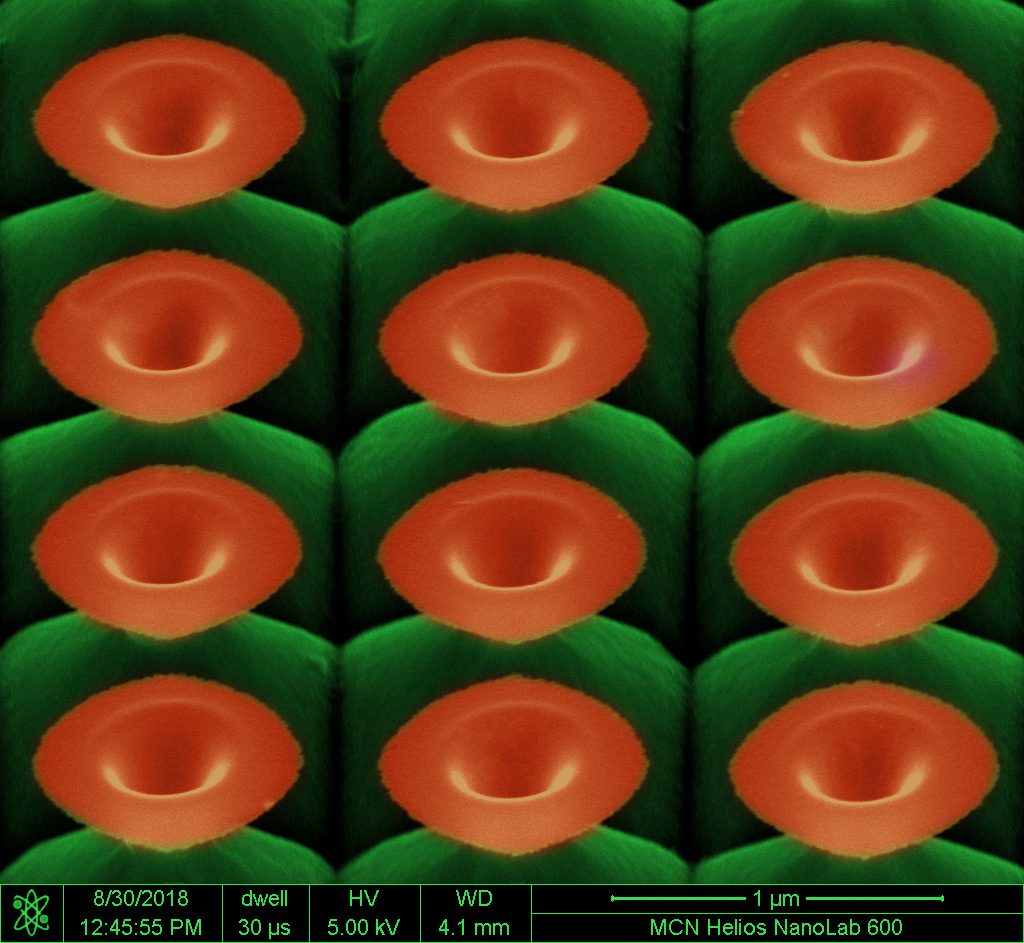
It appears that the ANFF-VIC community has green fingers this year – Microscopic Gardening: Tiny Blossoms of Silicon by Vivek Garg has been voted the ANFF-VIC Image of the Year 2018.
The image shows a scanning electron micrograph (false-color) of Silicon (Si) nanoflowers, created using MCN’s Focused Ion Beam (FIB) in conjunction with wet chemical etching.
As winner of the competition, Vivek will take home a $200 prize.
Vivek and his colleagues are investigating fabrication of 3D freeform structures of Si, such as these nanoflowers, due to their unique optical properties. Such structures can be engineered to selectively absorb light, and produce various colours depending on their architecture – they have tremendous potential for future optics applications such as optical security, polarimetry, and spectral imaging.
“The bulk structuration of Si substrate, based on the ion implantation design and area, allows fabrication of exotic functional and 3D micro/nanostructures on Si substrate exhibiting unique optical properties for applications in nanophotonics and physical sciences,” Vivek explained.
Vivek is a PhD candidate with the IITB-Monash Research Academy, a collaboration between IIT Bombay, India and Monash University, Australia. He is working with Dr Rakesh Mote (IIT Bombay) and Dr Jing Fu (Monash) on the fabrication and controlled manipulation of freeform 3D micro/nanostructures with ion beams. This work is a part of his thesis project, in which he is investigating the use of FIB nanofabrication in creating novel nanostructures for diverse applications such as anti-reflection, colour filtering, sensors and more.
Read more about Vivek’s work here http://www.vivekgarg.org/, or view the full shortlist for the 2018 Image of the Year competition below.
Farewell, congratulations, and good luck to Rosie Hicks, ANFF’s inaugural CEO
Rosie Hicks, ANFF CEO, has decided to move on to her next chapter after nearly 12 years at the helm of the Australian National Fabrication Facility (ANFF).
She will take up the position of CEO of the recently formed Australian Research Data Commons (ARDC) on 15 April 2019.
Images from a farewell event held at MCN can be seen above.
Vote for your ANFF-VIC Image of the Year
A strong list of contenders has been whittled down to 5 finalists for the ANFF-VIC Image of the Year, following an internal shortlisting process.
Now it’s time for the public to have their say and help decide the best image to come out of the Melbourne Centre for Nanofabrication in 2018, and who should take home the $200 cash prize.
In the captions to the images in the slide deck above is a link to a tweet. Choose your favourite image and then cast your vote by retweeting or liking the corresponding tweet.
Make sure you follow @nanomelb to keep track of the results.
The winner will be announced on 26 March 2019.
Deadline approaching: San Francisco Landing Pad

The Defence Innovation Hub has put a call out for an exciting opportunity to register for a new Government initiative that is part of the Australian Government’s Defence Export Strategy.
Austrade has partnered with the Australian Defence Export Office (ADEO) and CSIRO, to deliver a market-entry program for dual civilian and defence use start-ups/scale-ups at the San Francisco Landing Pad.
The Landing Pads program provides market-ready startups and scaleups with potential for rapid growth a cost-effective option to land and expand into major global innovations hubs around the world.
Landing Pads provide market-ready startups and scaleups with:
– a ninety-day residency in a co-working space to help them grow their business by facilitating in-market business development, introductions to investors and mentor networks and strategic partnership opportunities
– business services and in-market learnings from local and international experts
– access to a curated community that supports Australian entrepreneurs who want to go global via shared insights and collaboration opportunities, and
– assistance post residency with business advice to help them continue to grow their business.
Applications close on 8 March 2019. To find out more about the landing pads program visit www.australiaunlimited.com/landing-pads
MCN-endorsed ARC and NHMRC grants and fellowships total $4.5 million in 2018

In the first year of its implementation, MCN’s Grant Participation policy has helped nine researchers secure successful grant outcomes.
The Australian Research Council (ARC) and the National Health and Medical Research Council (NHMRC) has awarded in excess of $4.5 million to MCN-endorsed grant applications in 2018.
A total of nine grants which were put forward by existing and prospective MCN users were successful in their applications. These included three ARC Discovery Projects, two DECRA Fellowships, an ARC Linkage Grant, one LIEF Project, an ITRP project, and an NHMRC Early Leadership grant.
The researchers behind these applications all worked closely with MCN as they formed their applications. The Centre’s expert engineers helped to provide access to training and capabilities, budgets, feasibility information, or letters of endorsement.
MCN’s involvement is a part of the Centre’s Research and Innovation initiatives that were put in place during 2018 and are aimed at providing in-kind grant support for Australian academic researchers who make use of MCN infrastructure.
Working with MCN seems to have helped to achieve success – 33% of the applications the Centre assisted with were granted, while the national average was approximately 23%.
MCN would like to congratulate and thank all of the successful applicants – The Centre’s staff look forward to working together to realise the proposed research.
For more information regarding future applications or enquiries with how the Centre can help, contact Hemayet Uddin or refer to the MCN Research Grant Participation Policy.
A fond farewell to a founding staff member…
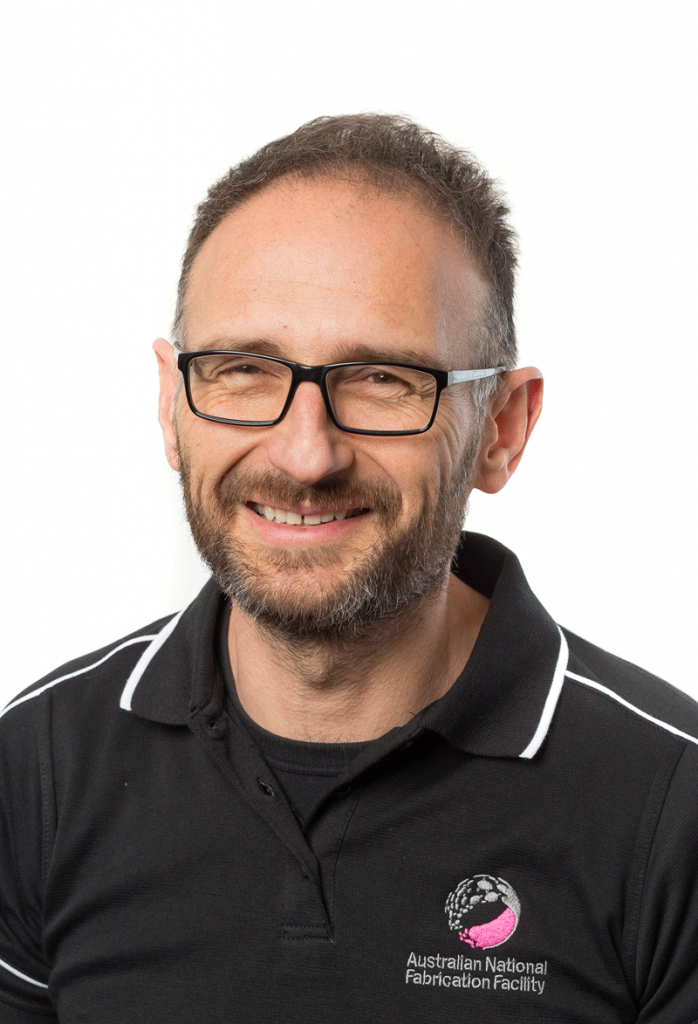 It’s both a sad time and an exciting one as MCN wishes the best of luck to Zoran Vasic, one of the Centre’s founding staff members, as he starts the next chapter in his career.
It’s both a sad time and an exciting one as MCN wishes the best of luck to Zoran Vasic, one of the Centre’s founding staff members, as he starts the next chapter in his career.
Zoran was part of the first MCN team, starting even before the Centre had been built. Since joining, he has been demonstrating his skills as an engineer, a scientific communicator, and a teacher with a clear love of spreading the word about the wonders of nanofabrication and physics to both children and staff members alike, while ensuring that the MCN can keep to the high standards that it maintains.
MCN and the whole of the ANFF network would like to thank Zoran for his near-ten-years of service, and to wish him all the best in the future.
